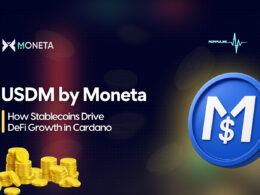When it comes to securing Web3 assets like cryptocurrencies and NFTs, two primary storage methods stand out which are hot wallets and cold wallets. Each comes with distinct advantages and drawbacks, making them suitable for different use cases depending on a user’s needs.
In this article, we will discuss the differences between hot and cold wallets, their security features, and which option might be safer for storing Web3 assets.
What Are Hot Wallets?
Think of a hot wallet like a toy box that sits on your living room floor. It’s always open, and you can quickly grab your toys (your Web3 assets) whenever you want to play. This toy box is connected to the internet, just like how your computer or phone is connected to the internet when you browse websites.
Because it’s online and always available, you can easily take your toys in and out without any trouble. But there’s a problem: since it’s always open, someone else could also grab your toys if they find a way into your house. So, while it’s super easy for you to access your things, it’s also not as safe.
These wallets are typically free and support various cryptocurrencies and tokens, making them highly accessible for day-to-day Web3 activities like DeFi, trading, or NFT transactions.
Key Features of Hot Wallets:
- Always online: Hot wallets are internet-connected, meaning they are readily available for use.
- Ease of use: These wallets are generally easy to set up and user-friendly, even for beginners.
- Support for multiple assets: Many hot wallets support a wide range of Web3 assets, including different blockchain tokens.
- Fast transactions: Since they are always connected, hot wallets allow for quick transfers, making them ideal for frequent traders and Web3 users.
Pros:
- Convenience: Hot wallets provide seamless access to Web3 assets and are perfect for active users who require constant availability.
- User-friendly: Many wallets come with intuitive interfaces that make managing and exchanging assets simple.
- Integration with Web3 apps: Hot wallets often integrate with decentralized applications (dApps), making them ideal for users interacting with DeFi protocols, NFTs, and other Web3 platforms.
Cons:
- Vulnerability to hacking: Because hot wallets are always online, they are more exposed to hacks, phishing attacks, and malware compared to cold wallets.
- Less secure for long-term storage: Storing significant amounts of Web3 assets in hot wallets is riskier due to their constant online presence, which increases exposure to attacks.
What Are Cold Wallets?
Think of a cold wallet as a big treasure that’s locked up in your bedroom closet. It’s offline, meaning it’s not connected to the internet, like when your computer is turned off. You have to unlock it and get the keys to access your toys.
This treasure keeps your most special toys (your important Web3 assets) safe because no one can get into them unless they have your keys. It’s like a secret hiding place for your favorite toys that you don’t play with every day. Even though it’s harder to open and takes more time, it’s much safer than the toy box in the living room.
These wallets are typically hardware devices (like Ledger or Trezor) or paper wallets where private keys are written down. Cold wallets are widely considered the safest option for storing large amounts of Web3 assets for the long term.
Key Features of Cold Wallets:
- Offline storage: Cold wallets are disconnected from the internet, making them immune to online hacks and unauthorized access.
- Private key control: Users maintain full control over their private keys, adding an extra layer of security.
- Ideal for long-term storage: Cold wallets are best for storing significant amounts of Web3 assets that do not require frequent transfers.
Pros:
- Superior security: By being offline, cold wallets are practically immune to online threats like hacking, malware, and phishing attacks.
- Best for large amounts: For those holding large quantities of cryptocurrencies or high-value NFTs, cold wallets provide the safest option for long-term storage.
- User control: Cold wallets give you complete control over your private keys, enhancing security and ensuring that only the owner can access the assets.
Cons:
- Less convenient: Because cold wallets are offline, users must connect them to a device and sign transactions manually, making them less suitable for frequent transactions.
- Cost: Hardware wallets can be expensive, with popular models ranging from $50 to $200, which might not be ideal for casual users.
Hot vs. Cold Wallet: Which Is Safer?
When evaluating security, cold wallets are generally considered the safest option due to their offline nature. Since they are disconnected from the internet, the chances of them being hacked are minimal, making them ideal for those storing large amounts of Web3 assets or looking to hold assets for the long term.
However, cold wallets may not be as convenient for users who need to make regular transactions. In contrast, hot wallets provide greater accessibility and ease of use, making them better suited for active Web3 participants.
While many hot wallets employ security measures such as encryption, multi-factor authentication (MFA), and seed phrases, they still remain more vulnerable to phishing, malware, or platform hacks due to their online presence.
How to Enhance Security for Both Wallets
Regardless of which wallet type you choose, there are additional steps you can take to maximize security for both hot and cold wallets:
- Use strong passwords: Ensure that the passwords for your wallet accounts are long, complex, and unique.
- Enable multi-factor authentication (MFA): For hot wallets, always enable MFA where possible to add an extra layer of security.
- Backup seed phrases: For both hot and cold wallets, securely store your seed phrase or private keys offline in a secure location.
- Use trusted hardware: When using a cold wallet, ensure that you are purchasing from a trusted and reputable manufacturer to avoid tampered or faulty devices.
- Keep software up-to-date: Regularly update the software for both types of wallets to benefit from the latest security patches.
Conclusion
The choice between a hot and cold wallet ultimately depends on your specific needs. Cold wallets offer superior security for long-term storage of large amounts of assets, making them the better option for those prioritizing security over convenience.
Hot wallets, on the other hand, provide the accessibility and speed needed for frequent transactions and active engagement with Web3 applications but come with a higher risk of online threats.
A combination of both wallet types can be the ideal solution. Using a cold wallet for long-term storage and a hot wallet for daily transactions provides both security and convenience, ensuring that your Web3 assets are well-protected while still allowing you to interact with the Web3 ecosystem.









